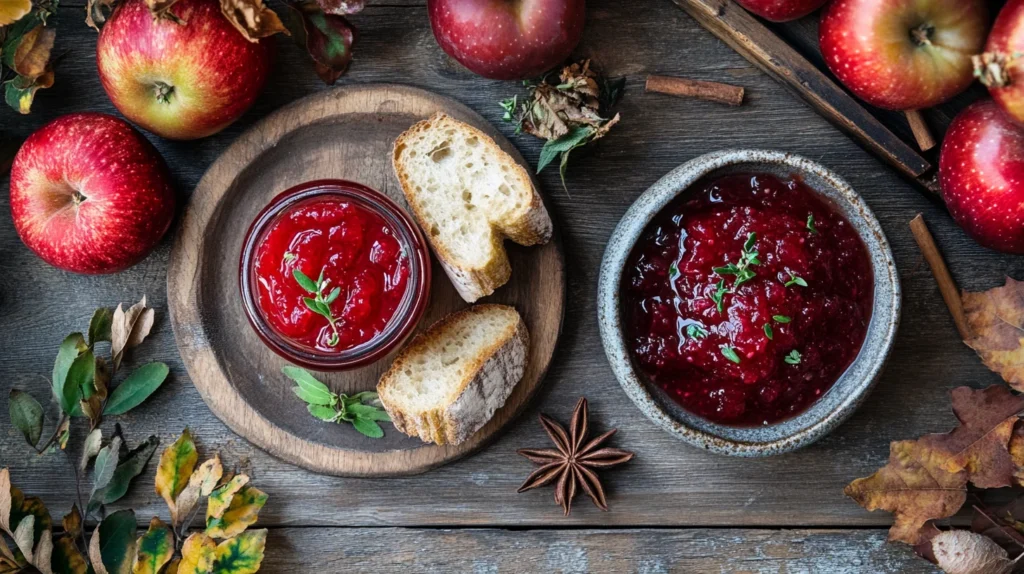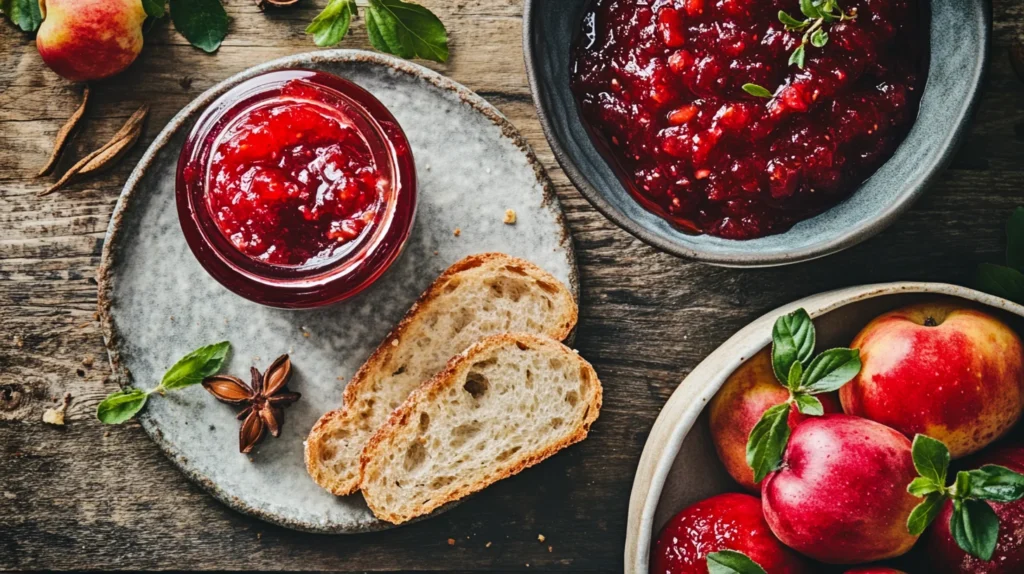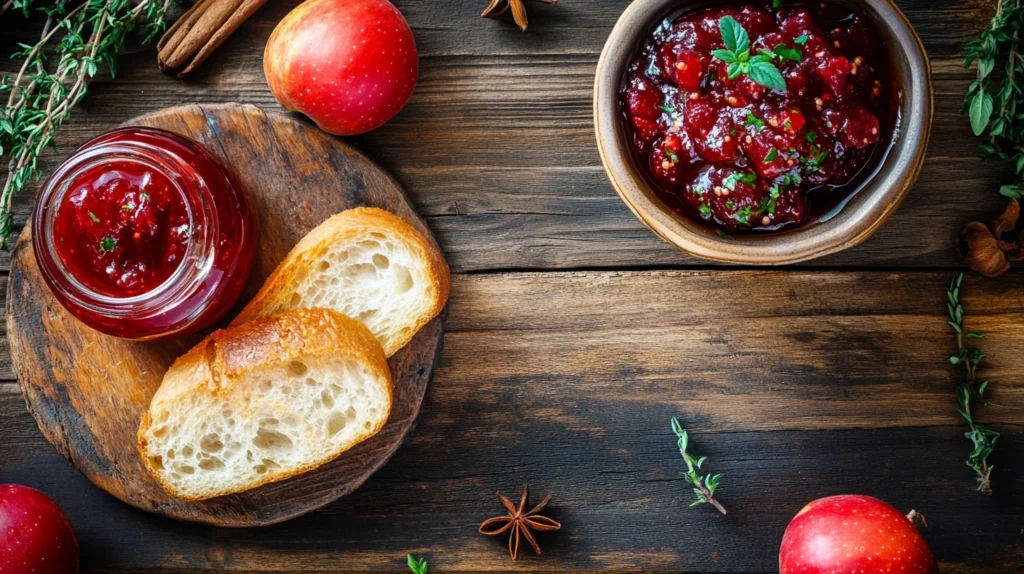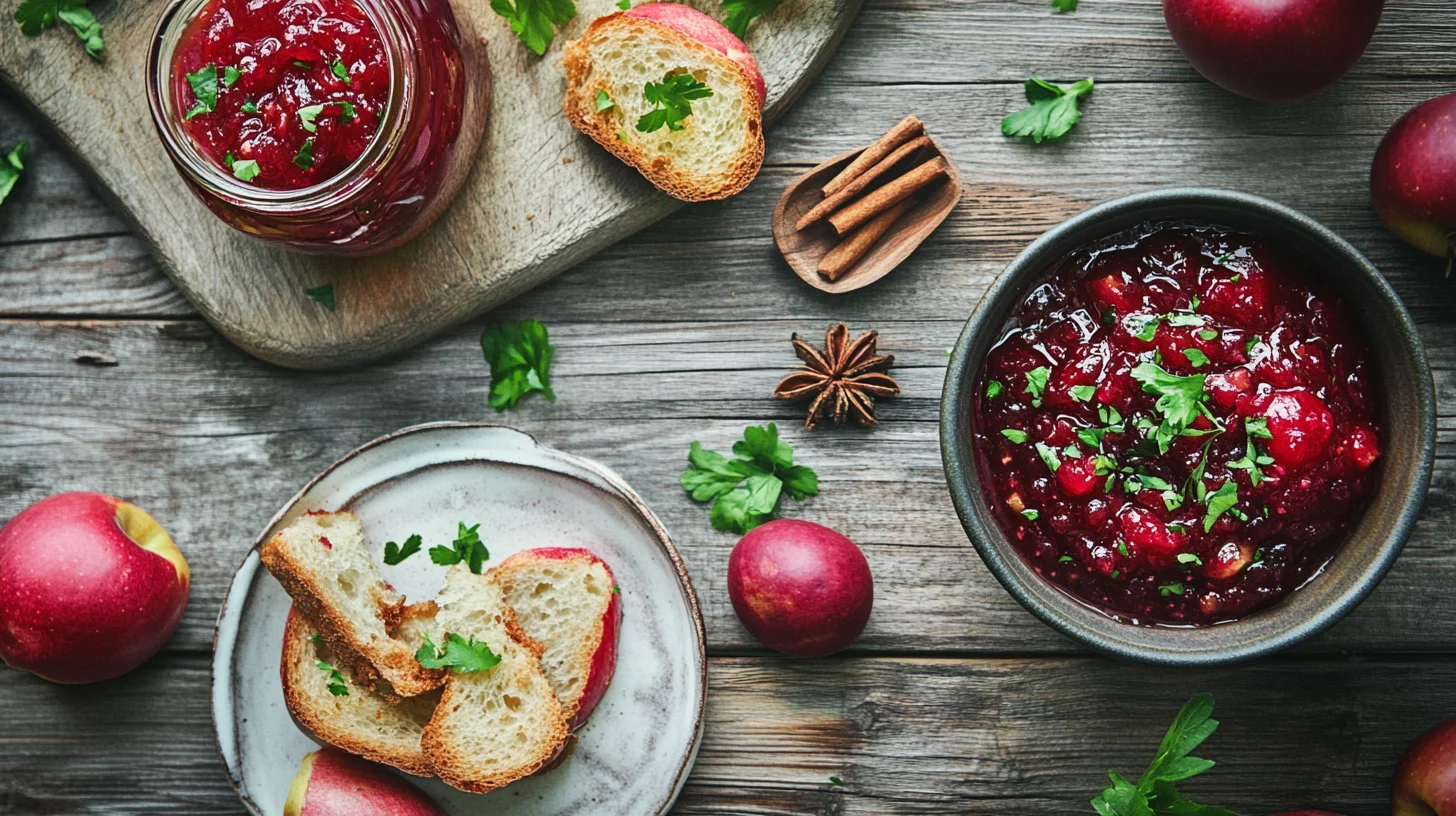Crab Apple: Health Benefits and 2 Delicious Recipes to Try is a topic that combines the allure of culinary creativity with the abundance of health advantages found in these unique fruits. While crab apples may not be as commonly known as their larger counterparts, their nutritional value and versatility in the kitchen deserve recognition. Join us as we explore the fascinating world of crab apples, unveiling their benefits while also providing you with delightful recipes to incorporate them into your meals.
Introduction to Crab Apples
Crab apples are small, tart fruits that belong to the Malus genus, which includes all apple varieties. Typically smaller than standard apples, they range in size from about one inch to two inches in diameter, boasting a variety of colors, from bright green to deep red. Their unique flavor profile, characterized by a combination of sweetness and acidity, makes them distinctively different yet equally appealing when compared to traditional apple varieties.
The history of crab apples dates back thousands of years, with evidence suggesting they were among the first cultivated fruits. Originating in Central Asia, crab apples eventually spread across Europe, where they became symbols of prosperity and abundance. Over time, various cultivars emerged, leading to the popular varieties we recognize today, such as ‘Dolgo’, ‘Harvest Gold’, and ‘Centennial’. Each cultivar offers its own unique characteristics, paving the way for diverse culinary applications.
As more people discover the wonders of crab apples, they are increasingly embraced in gardens and orchards worldwide. Not only do they enhance landscapes with their beautiful blossoms in spring, but they also yield delicious fruits in the fall. Beyond their aesthetic appeal, crab apples are a treasure trove of nutrients and flavors waiting to be explored.
Nutritional Profile of Crab Apples
When discussing the nutritional profile of crab apples, it’s essential to highlight their impressive array of vitamins, minerals, and antioxidants. Despite their small size, these fruits pack a punch when it comes to nutrition, making them a valuable addition to any diet.
Vitamins B and C play crucial roles in maintaining healthy bodily functions, ranging from boosting the immune system to promoting energy metabolism. Vitamin C, in particular, can significantly help in skin health and repair, while B vitamins are essential for converting food into energy.
In terms of minerals, crab apples contain potassium and fiber, both of which contribute to heart health and digestive wellness. Potassium helps in regulating blood pressure and supporting nerve function, whereas dietary fiber aids in digestion and can help manage cholesterol levels.
Examining crab apples in comparison to regular apple varieties, it’s clear that while both offer substantial health benefits, crab apples tend to have a slightly lower sugar content. This quality makes them suitable for those looking to reduce sugar intake without sacrificing flavor or nutrients. The caloric content of crab apples is relatively low, making them an excellent choice for snackers seeking healthier options.
Overview of Vitamins and Minerals Found in Crab Apples
Crab apples are rich in essential vitamins and minerals that provide numerous health benefits. Among them, vitamin C stands out due to its ability to bolster immunity and combat oxidative stress. Additionally, vitamin K plays a role in blood clotting and bone health.
Speaking of mineral content, crab apples are a good source of potassium, which contributes to muscle function and regulates blood pressure. The presence of magnesium is essential for energy production and nerve transmission, aiding overall vitality.
Moreover, the fiber in crab apples supports digestive health, promoting regularity and improving gut health. Fiber helps regulate blood sugar levels, making crab apples a great option for those managing diabetes or looking to maintain stable energy levels throughout the day.
Comparison with Regular Apple Varieties
While both crab apples and regular apples share many similarities, there are notable differences worth exploring. Firstly, crab apples typically have a tangier flavor, which can be attributed to their higher acidity levels. This tartness often lends itself well to cooked dishes, jams, and jellies.
Regular apples, on the other hand, come in a variety of sweet flavors, making them ideal for fresh snacking or raw preparations. Varieties like Fuji or Honeycrisp boast sweetness that can be enjoyed on their own or added to salads and desserts.
From a nutritional standpoint, crab apples are often lower in sugar and calories compared to sweet apple varieties. This characteristic allows health-conscious consumers to enjoy the robust flavors of crab apples without the risks associated with excessive sugar intake.
Caloric Content and Serving Size Information
A serving of crab apples usually consists of two or three whole fruits, depending on their size. A typical crab apple contains around 30-50 calories, making it a guilt-free option for snacking or adding to dishes.
For those looking to incorporate crab apples into their diets, understanding serving sizes is key. When used in recipes, it’s often beneficial to balance their tartness with sweeter ingredients, creating harmony in both flavor and nutrition.
In conclusion, crab apples represent a nutritious choice that not only enhances the taste of dishes but also promotes overall health and wellness. Their low-calorie count, combined with high vitamin and mineral content, makes them a fantastic inclusion in anyone’s diet.

Health Benefits of Crab Apples
Crab apples are not just delightful to eat; they also provide a plethora of health benefits that can enhance overall well-being. From their rich antioxidant content to their potential effects on heart health, these tiny fruits pack a powerful punch.
One prominent feature of crab apples is their high level of antioxidants. Antioxidants are compounds that help neutralize harmful free radicals in the body, reducing oxidative stress and lowering the risk of chronic diseases. By incorporating crab apples into your diet, you can benefit from their protective properties against conditions like heart disease and certain cancers.
Another significant advantage of crab apples is their anti-inflammatory properties. Chronic inflammation is linked to various health issues, including arthritis, cardiovascular diseases, and even mental health disorders. The phytochemicals present in crab apples can help combat inflammation, potentially leading to improved health outcomes.
Moreover, crab apples may support heart health through their ability to lower blood pressure and cholesterol levels. The soluble fiber found in these fruits can help remove excess cholesterol from the bloodstream, while potassium supports healthy blood pressure levels. Together, these benefits contribute to a healthier cardiovascular system.
Rich Source of Antioxidants
Antioxidants play an essential role in protecting cells from damage caused by oxidative stress. Crab apples are particularly abundant in flavonoids and polyphenols—two classes of antioxidants known for their health benefits.
Flavonoids are plant compounds with powerful antioxidant properties. They can help lower blood pressure, improve blood circulation, and reduce the risk of heart disease. Similarly, polyphenols have been studied for their potential to combat inflammation and protect against various diseases.
Including crab apples in your diet allows you to harness these antioxidants’ power. Whether consumed fresh or as part of a recipe, the health benefits of these fruits extend far beyond their delightful taste.
Anti-Inflammatory Properties and Their Implications for Health
Chronic inflammation is a silent killer that can lead to various health complications over time. Studies have shown that consuming foods rich in anti-inflammatory compounds can dramatically reduce markers of inflammation in the body.
Crab apples contain several bioactive compounds that can help mitigate inflammation. The antioxidants mentioned earlier, alongside dietary fiber, work together to reduce inflammatory responses and promote a healthier lifestyle.
By making crab apples a regular part of your meals, you might find yourself enjoying not only a burst of flavor but also benefiting from their anti-inflammatory properties, potentially improving your quality of life.
Potential Benefits for Heart Health
Heart disease remains one of the leading causes of death globally. However, incorporating heart-healthy foods into your diet can significantly reduce your risk. Crab apples show promise in this regard due to their nutrient composition.
The soluble fiber in crab apples can aid in lowering cholesterol levels, while potassium supports healthy blood pressure regulation. Furthermore, the antioxidants found in these fruits have been shown to improve endothelial function, which is vital for maintaining healthy blood vessels.
By prioritizing heart health through dietary choices, including crab apples, you can take proactive steps toward reducing your risk of cardiovascular diseases while enjoying the rich flavors they provide.
Role in Digestive Health and Fiber Content
Digestive health is foundational to overall well-being, and fiber plays a critical role in maintaining a healthy gut. Crab apples contain both soluble and insoluble fibers, which contribute to digestive regularity.
Soluble fiber dissolves in water, forming a gel-like substance that can assist in lowering cholesterol and stabilizing blood sugar levels. Insoluble fiber adds bulk to stool, promoting regular bowel movements and preventing constipation.
Incorporating crab apples into your daily routine can help support a balanced digestive system, ensuring you remain comfortable and healthy. Whether enjoyed raw, cooked, or in a sauce, the fiber content of these fruits makes them an excellent choice for digestive wellness.
Effects on Blood Sugar Levels and Diabetes Management
Managing blood sugar levels is crucial for individuals with diabetes or those at risk of developing the condition. Fortunately, crab apples can be a beneficial addition to a balanced diet for several reasons.
First, the low glycemic index of crab apples means they have a minimal impact on blood sugar levels compared to sweeter fruits. Additionally, the fiber in crab apples can help slow down the absorption of glucose, preventing rapid spikes in blood sugar.
Incorporating crab apples into your meals can create a sense of satisfaction without compromising blood sugar control. Pairing them with proteins or healthy fats can further enhance their benefits, making them a delightful and nutritious choice for everyone.
Crab Apples and Immune System Support
Immune system support is essential for maintaining optimal health, especially during times when illness runs rampant. The consumption of foods rich in vitamins and minerals can fortify your body’s defenses, and crab apples are an excellent candidate for this purpose.
Among the key contributors to immune function are vitamins C and E, both present in crab apples. Vitamin C is particularly renowned for its ability to stimulate the production of white blood cells, crucial for fighting infections. Meanwhile, vitamin E acts as a potent antioxidant, enhancing overall immune response.
Phytochemicals found in crab apples also play a role in supporting the immune system. These naturally occurring compounds have antimicrobial properties that can help fend off bacteria and viruses, adding an extra layer of defense.
Vitamins Contributing to Immune Function
Vitamin C is often hailed as the go-to nutrient for immune support. Its powerful antioxidant properties help protect cells from damage while stimulating the production of antibodies and white blood cells. A single serving of crab apples provides a noteworthy amount of vitamin C, making them a smart choice for those wanting to enhance their immunity.
Vitamin E, another essential nutrient for immune health, promotes not only a stronger immune response but also supports skin health. By combining crab apples with other sources of vitamin E, such as nuts or seeds, you can create delicious dishes that nourish your body while boosting your immune system.
Antimicrobial Properties of Crab Apples
In addition to their vitamin content, crab apples possess natural antimicrobial properties, offering protection against various pathogens. Research has indicated that specific compounds within crab apples can inhibit the growth of harmful bacteria and fungi, helping to safeguard overall health.
Utilizing crab apples in your diet can act as a preventive measure against infections. Incorporating them into sauces, jellies, or chutneys can add both flavor and protection, allowing you to enjoy the benefits of these fruits while delighting your taste buds.
Importance of Phytochemicals in Enhancing Immunity
Phytochemicals are bioactive compounds that exist in plants, contributing to their color, flavor, and disease resistance. In crab apples, these compounds can enhance immune function by acting as antioxidants and anti-inflammatory agents.
Research continues to uncover the myriad ways phytochemicals support human health. Including a variety of fruits and vegetables in your diet, including crab apples, can ensure you reap the full spectrum of their benefits, bolstering your immunity and overall well-being.
Crab Apples as a Natural Remedy
Throughout history, various cultures have recognized the medicinal properties of crab apples. Traditionally used in herbal medicine, these fruits have been valued for their potential therapeutic effects.
Modern scientific studies begin to unveil the potential health benefits of crab apples, reinforcing their place in natural remedies. As interest grows, many people now seek ways to incorporate crab apples into their health regimen.
Understanding preparation methods can enhance your ability to utilize crab apples effectively, whether in tinctures, teas, or syrups. Exploring these remedies can connect you back to nature while supporting your health goals.
Traditional Uses in Herbal Medicine
In traditional herbal practices, crab apples have been utilized for centuries to address various ailments. From digestive issues to skin irritations, these fruits were believed to possess healing properties.
In ancient times, crab apples were often used in infusions and decoctions to harness their therapeutic benefits. Their high pectin content made them a popular choice for thickening syrups and jams, which could then be used to soothe sore throats or alleviate gastrointestinal discomfort.
Today, there is a resurgence of interest in using natural remedies, and crab apples are once again gaining popularity for their potential health benefits. Embracing traditional wisdom can be a powerful approach to wellness.
Overview of Scientific Studies Supporting Medicinal Benefits
Recent research has begun to validate many of the traditional uses of crab apples. Studies exploring the fruit’s antioxidant and anti-inflammatory properties demonstrate promising results, showing potential benefits for issues such as cardiovascular health and diabetes management.
Additionally, ongoing investigations into the phytochemicals present in crab apples may uncover new applications in modern medicine. By bridging the gap between traditional practices and contemporary science, we may better understand how crab apples can contribute to overall health.
Preparation Methods for Utilizing Crab Apples in Remedies
To harness the medicinal benefits of crab apples, various preparation methods can be employed. Infusing crab apples in alcohol or vinegar can create potent tinctures that may serve as remedies for various ailments. Alternatively, making teas from dried crab apples can offer soothing effects, especially during cold and flu season.
Crab apple syrups can be crafted to provide relief for sore throats or coughs, blending simple syrup techniques with herbal knowledge. Understanding these methods can empower you to take charge of your health while enjoying the gifts of nature.
Culinary Uses of Crab Apples
Culinary innovation knows no bounds, and crab apples serve as a versatile ingredient that can elevate countless dishes. Their tartness and distinct flavor can add depth to various culinary creations, whether in sweet or savory applications.
Historically, crab apples have found their way into traditional dishes, often showcasing their adaptability. Today, chefs and home cooks alike continue to experiment with these fruits, discovering new ways to incorporate them into modern cooking.
Pairing suggestions can enhance flavor profiles, allowing crab apples to shine in your culinary endeavors. With creativity and a little experimentation, you can showcase crab apples in dishes that will impress family and friends.
Overview of Traditional Dishes Using Crab Apples
In traditional cuisines, crab apples have long been celebrated for their unique flavor and versatility. Countries like the United Kingdom have utilized these fruits in classic dishes, such as crab apple jelly or pies, showcasing their ability to transform flavors beautifully.
Jams and preserves made from crab apples highlight their natural sweetness while balancing their tartness. They pair wonderfully with meats, offering a tangy contrast that enhances savory dishes. Many cultures also utilize crab apples in chutneys, accentuating their complex flavors to create delightful condiments.
How to Incorporate Crab Apples into Modern Recipes
The beauty of crab apples lies in their adaptability to modern cooking techniques. They can be roasted, stewed, or even blended into smoothies, bringing a delightful twist to traditional recipes.
Consider using crab apples as a substitute for regular apples in pies or crumbles, taking advantage of their tartness to create a more balanced dessert. Alternatively, sautéing crab apples with onions and spices can produce a flavorful accompaniment to pork or poultry.
Creative chefs have also begun to blend crab apples into dressings, sauces, and marinades, incorporating their fruity notes to enhance overall flavor. The possibilities are truly endless!
Pairing Suggestions with Other Ingredients
When working with crab apples in the kitchen, thoughtful pairing can significantly enhance their natural flavors. Combine them with savory ingredients like cheese or charcuterie boards for a delightful contrast.
Their tartness harmonizes beautifully with sweet ingredients such as honey, cinnamon, or brown sugar. Consider crafting a spiced crab apple compote to serve alongside roasted meats, offering a burst of flavor that complements the dish.
Alternatively, combining crab apples with nuts, such as walnuts or pecans, creates a delightful texture while adding richness. Experimentation with herbs like rosemary or thyme can also introduce a fragrant complexity to your dishes.
Recipe 1: Crab Apple Jelly

Crab apple jelly is a timeless classic that highlights the unique flavor of crab apples while preserving their nutritional benefits. This simple recipe allows you to create a delightful spread that pairs perfectly with toast, scones, or meat dishes.
Ingredients List
- 4 cups of crab apples, washed and quartered
- 2 cups of water
- 1/4 cup of lemon juice
- 1 package of fruit pectin (such as Sure-Jell)
- 4 cups of granulated sugar
- Optional: spice blend (cinnamon, cloves) for added flavor
Step-by-Step Instructions for Preparation
- Preparation: Begin by washing your crab apples thoroughly. Quarter the fruits without removing the cores, as they contribute pectin essential for jelly consistency.
- Simmering: Place the quartered crab apples in a large pot, add water and lemon juice, and bring it to a gentle boil. Allow the mixture to simmer for about half an hour until the apples become soft.
- Straining: After simmering, strain the mixture using a fine mesh strainer or cheesecloth. Collect the juice, which serves as the base for your jelly.
- Cooking the Jelly: Return the collected juice to the pot, and stir in the fruit pectin. Bring it to a rolling boil before slowly adding the granulated sugar. Stir continuously until the sugar completely dissolves.
- Testing for Set: Allow the mixture to boil for approximately five minutes, stirring regularly. To test for set, place a spoonful of the mixture on a plate and cool it in the freezer for a minute. If it firms up, your jelly is ready.
- Canning: Pour the hot jelly into sterilized jars, leaving about half an inch of headspace. Seal the jars with lids, and process them in a boiling water bath for ten minutes to ensure preservation.
Tips for Achieving the Perfect Consistency
Achieving the perfect jelly consistency requires attention to detail. Utilize high-quality fruit pectin for optimal results, and ensure the mixture reaches a proper boiling point to activate the gelling properties.
Remember to conduct the “spoon test” regularly to check for set consistency, adjusting cooking time based on desired firmness. Keep in mind that the jelly will continue to firm as it cools, so avoid overcooking.
Serving Suggestions
Crab apple jelly can be enjoyed in numerous ways. Spread it on warm, crusty bread for breakfast, swirl it into yogurt for a hint of sweetness, or use it as a glaze for roasted meats. The vibrant flavor of crab apples comes alive in every bite!
Recipe 2: Spiced Crab Apple Chutney

Spiced crab apple chutney is a delightful condiment that adds a burst of flavor to an array of dishes. Its sweet, tangy profile and fragrant spices make it an excellent pairing with meats, cheeses, and even sandwiches.
Ingredients List
- 4 cups of peeled and diced crab apples
- 1 onion, finely chopped
- 1 cup of brown sugar
- 1 cup of vinegar (apple cider or white)
- 1/2 cup of raisins or currants
- 2 teaspoons of grated ginger
- 1 teaspoon of ground cinnamon
- 1/2 teaspoon of cloves
- 1/2 teaspoon of allspice
- Salt and pepper to taste
Detailed Cooking Process
- Preparation: Begin by peeling and dicing the crab apples, ensuring they are uniform in size for even cooking. Finely chop the onion and set aside.
- Sautéing: In a large pot, heat a tablespoon of oil over medium heat. Add the chopped onion and sauté until translucent, about five minutes.
- Combining Ingredients: Add the diced crab apples, brown sugar, vinegar, raisins, and spices to the pot. Stir to combine, ensuring the apples are coated in the mixture.
- Simmering the Chutney: Bring the mixture to a gentle boil, then reduce the heat to low. Allow it to simmer for about 45 minutes, stirring occasionally until the chutney thickens and the apples are soft.
- Adjusting Seasoning: Taste the chutney and adjust seasoning as necessary. You can add salt and pepper based on your flavor preferences.
- Canning: Once the chutney has reached the desired consistency, pour it into sterilized jars and seal with lids. Allow it to cool before storing in the refrigerator.
Ideas for Pairing Chutney with Meals
Spiced crab apple chutney pairs exceptionally well with a variety of dishes. Serve it alongside roasted chicken or pork for a delightful contrast of flavors. It also complements cheese platters remarkably well, making it an ideal addition to any gathering.
Additionally, consider using the chutney as a spread for sandwiches or wraps to elevate lunchtime favorites. The versatility of crab apple chutney allows it to shine in various culinary contexts, establishing it as a staple condiment.
Storage and Preservation Tips
To maximize the shelf life of your spiced crab apple chutney, ensure jars are properly sealed and stored in a cool, dark place. Homemade chutneys can last for several months when properly canned and preserved.
If you have leftover chutney, refrigerate and consume it within a few weeks for optimal freshness. Enjoy the flavors of crab apples long after the growing season ends!
How to Select and Store Crab Apples
Selecting and storing crab apples correctly will maximize their flavor and longevity. Knowing what to look for in ripe crab apples and understanding ideal storage conditions can ensure your fruits remain fresh and delicious.
Tips for Choosing Ripe Crab Apples
When selecting crab apples, look for firm, unblemished fruits with vibrant coloring. Avoid fruits that exhibit signs of mushiness or browning, as these may indicate overripeness or decay.
It’s also useful to consider the variety, as some crab apples are best suited for eating fresh while others excel in cooking or preserving. Don’t hesitate to sample if available—a slight tartness is typical, and it’s part of their charm!
Ideal Storage Conditions to Maintain Freshness
Crab apples should ideally be stored in a cool, dark place, such as a cellar or refrigerator. Keeping them at a consistent temperature can prolong their freshness, avoiding direct sunlight and excessive humidity.
While fresh crab apples are best enjoyed within a week or two of harvest, they can be used in preserves, jellies, or chutneys, extending their shelf life for future enjoyment.
Preservation Methods (Canning, Freezing, etc.)
If you have an abundance of crab apples, consider preserving them through canning or freezing. Canning can transform them into delicious spreads or chutneys, while freezing allows you to store them for later use in recipes.
To freeze crab apples, wash and slice them, then spread them in a single layer on a baking sheet. Freeze until solid before transferring them to airtight containers or freezer bags. This method retains their flavor, enabling you to enjoy crab apples year-round.
Conclusion
In summary, Crab Apple reveals the hidden gems within these unique fruits. From their impressive nutritional profile and myriad health benefits to exciting culinary applications, crab apples deserve a place in your diet.
As you venture into the world of crab apples, remember their rich history, diverse uses, and incredible versatility. Whether enjoyed fresh, transformed into jelly, or incorporated into chutney, crab apples symbolize the bounty of nature and the joy of cooking. We encourage you to explore these recipes and embrace the delightful flavors of crab apples in your daily meals. Happy cooking!
FAQ About Crab Apples
1. Is it safe to eat a crab apple?
Yes, crab apples are safe to eat in moderation. While they are very tart and often unpleasant raw, they can be used in various culinary applications like jams, jellies, and pies. Avoid eating the seeds, as they contain cyanide compounds, but consuming small amounts won’t harm you.
2. What do crab apples taste like?
Crab apples have a tart, sour, and sometimes bitter flavor. They are much more acidic than regular apples, making them ideal for cooking or making preserves but difficult to eat raw.
3. Why is it called a crab apple?
The name “crab apple” comes from the old English word “crabba,” meaning wild or sour. These small apples are generally wild varieties or cultivated breeds that are far more tart than regular apples.
4. How can you tell if an apple is a crab apple?
You can identify a crab apple by its small size (less than 2 inches in diameter), its tart taste, and the tree it grows on. Crab apple trees typically have fragrant flowers and denser branches than regular apple trees. The fruit is often compact and may range in color from yellow to red.
Discover a unique twist on a classic comfort food with this smoked mac and cheese recipe. The smoky flavor elevates this cheesy favorite to a whole new level, perfect for your next meal or gathering. Try it today!
Print
Crab Apple: Health Benefits and 2 Delicious Recipes to Try
- Total Time: 1 hour 15 minutes
- Yield: 5–6 cups 1x
Description
Crab Apple Jelly
Crab apple jelly is a sweet and tangy spread that’s perfect for toast, biscuits, or as a glaze for meats. This simple recipe transforms tart crab apples into a beautifully clear jelly that captures the essence of fall.
Spiced Crab Apple Chutney
Spiced crab apple chutney is a flavorful condiment with a perfect balance of sweet, tangy, and warm spices. It pairs wonderfully with roasted meats, cheeses, and bread, adding a touch of spice to your meals.
Ingredients
Crab Apple Jelly
- 4 lbs (1.8 kg) crab apples, washed and quartered
- 5 cups water
- 1/2 cup lemon juice
- Granulated sugar (1 cup per cup of juice obtained)
Spiced Crab Apple Chutney
- 3 lbs (1.3 kg) crab apples, cored and chopped
- 1 cup apple cider vinegar
- 1 1/2 cups brown sugar
- 1 medium onion, finely chopped
- 1/2 cup raisins
- 1 teaspoon ground cinnamon
- 1 teaspoon ground ginger
- 1/4 teaspoon ground cloves
- 1/4 teaspoon cayenne pepper (optional)
Instructions
Crab Apple Jelly
- Place the quartered crab apples and water in a large pot. Bring to a boil, then reduce heat and simmer for 30 minutes until the apples are soft.
- Strain the cooked apples through a jelly bag or cheesecloth, letting the juice drip into a bowl. Avoid squeezing to keep the jelly clear.
- Measure the juice. For every cup of juice, add 1 cup of sugar and 1/2 tablespoon lemon juice.
- Return the juice mixture to a pot. Bring it to a boil, stirring constantly, and cook until it reaches 220°F (104°C) or passes the sheeting test.
- Pour the jelly into sterilized jars, leaving 1/4-inch headspace. Seal and process in a boiling water bath for 10 minutes.
Spiced Crab Apple Chutney
- In a large pot, combine the crab apples, apple cider vinegar, and brown sugar. Stir to coat the apples.
- Mix in the onion, raisins, cinnamon, ginger, cloves, and cayenne pepper.
- Bring the mixture to a boil, then reduce the heat and simmer for 45-60 minutes, stirring occasionally, until thickened.
- Spoon the chutney into sterilized jars, leaving 1/4-inch headspace. Seal and process in a boiling water bath for 10 minutes.
Notes
Crab Apple Jelly
- Test for doneness using the spoon sheeting method or the cold plate test.
- Add a cinnamon stick or star anise while cooking for a warm spice undertone.
Spiced Crab Apple Chutney
- Adjust the spices to taste—add more cayenne for heat or extra cinnamon for sweetness.
- The chutney develops more flavor after sitting for a few days, so allow it to mature before serving.
- Prep Time: 15 minutes
- Cook Time: 1 hour
- Category: Spreads and Jams
- Method: Boiling
- Cuisine: American
Nutrition
- Serving Size: 1 tablespoon
- Calories: 50 kcal
- Sugar: 13g
- Sodium: 0mg
- Fat: 0mg
- Saturated Fat: 0mg
- Unsaturated Fat: 0mg
- Trans Fat: 0mg
- Carbohydrates: 13g
- Fiber: 0mg
- Protein: 0mg
- Cholesterol: 0mg
Keywords: Crab apple jelly, homemade jelly, easy jelly recipe, fruit spread, crab apple preserves Spiced crab apple chutney, apple chutney recipe, homemade chutney, sweet and savory condiment



